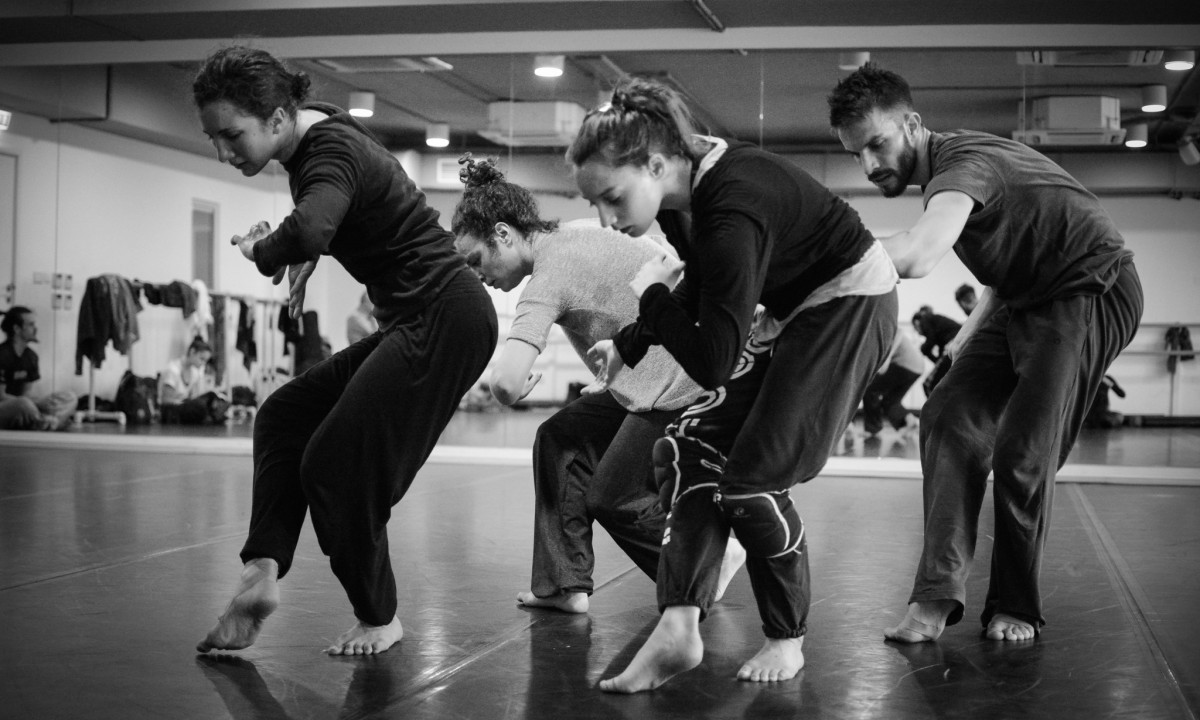
02 Mar Brush Strokes with Bodies in Movement
Blogger Marc Buhagiar better acquaints himself with the genre of contemporary dance by attending one of ŻfinMalta’s rehearsals. Read his thoughts below…
Many don’t understand contemporary dance or how much hard work goes into perfecting a performance. I’m still learning how to discern its meaning myself, but one thing I’m certain of is how beautiful and powerful this genre can be, stimulating a strong emotional rollercoaster even at rehearsal stage. To acquaint myself with this genre, I attended one of ŻfinMalta’s rehearsals, and my perception of it surprisingly changed. To most, it looks strange: random movements which, at times, aren’t even graceful, experimental music blaring out of speakers and abstract costumes. While these elements might puzzle some, their actual purpose is to invite the spectator to form an interpretation of the piece. Once you actually focus on the performance, on the story being told, you might surprise yourself and start looking at things differently.
Movement is not random at all, but rather is imbued with meaning and intention. Think of a painter. A painter generally paints with certain intent; same goes for writers and other artists. A dancer’s movement is no different than these, think of them as painters who use their bodies as canvases and paintbrushes. Through movement, they create an artistic piece. This, of course, is easier said than done. Imagine, trying to convey a feeling or message without relying on your facial features or your ability to talk or write, relying solely on your body’s movement.
Every action, every movement, every look, has a particular purpose in the grand scheme of things. I learnt this by attending one of ŻfinMalta’s rehearsals. Before entering the studio to observe the dancers at work, I had never realised how much work actually goes into preparing a piece. In this case, the dancers are gearing up for Erbgħa(4), ŻfinMalta’s upcoming event which showcases four dances by four different choreographers. See more here.
Simply as an observer, I experienced a rush of different sensations, from watching the dancers’ bodies contort, the faint smell of sweat lingering in the air, choreographers shouting out guidance, and the electrifying atmosphere once the performance reaches a climax or a certain momentum.
What also struck me is how determined and eager to learn these dancers are. After the gruelling rehearsal (and you can tell it’s tiring by their heavy panting), the dancers have a short break, while members of the artistic team such as Aristic Director Mavin Khoo and Dr Giuliana Fenech discuss everyone’s delivery of the performance. After the break’s over, feedback is given and discussion arises. However, it’s not just the artistic team that gives feedback, the dancers themselves peer review each other. It’s a fascinating learning experience for everyone.
Although I’m no expert by any stretch of the imagination, I’m enjoying getting slowly familiar with the style. At least, now I can appreciate a piece more knowing how much work and thought goes into it.
So, if you haven’t yet experienced a contemporary dance piece, I highly recommend you do so. You might be surprised that you’ve discovered a new guilty pleasure. If you think it’s not for you, fair enough, but you should try it at least once.
– Marc Buhagiar
